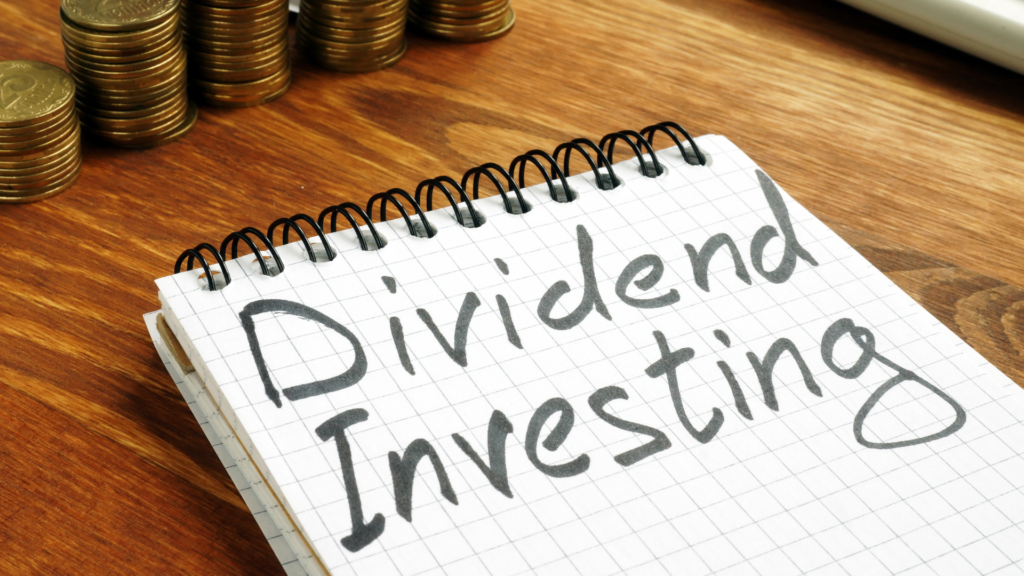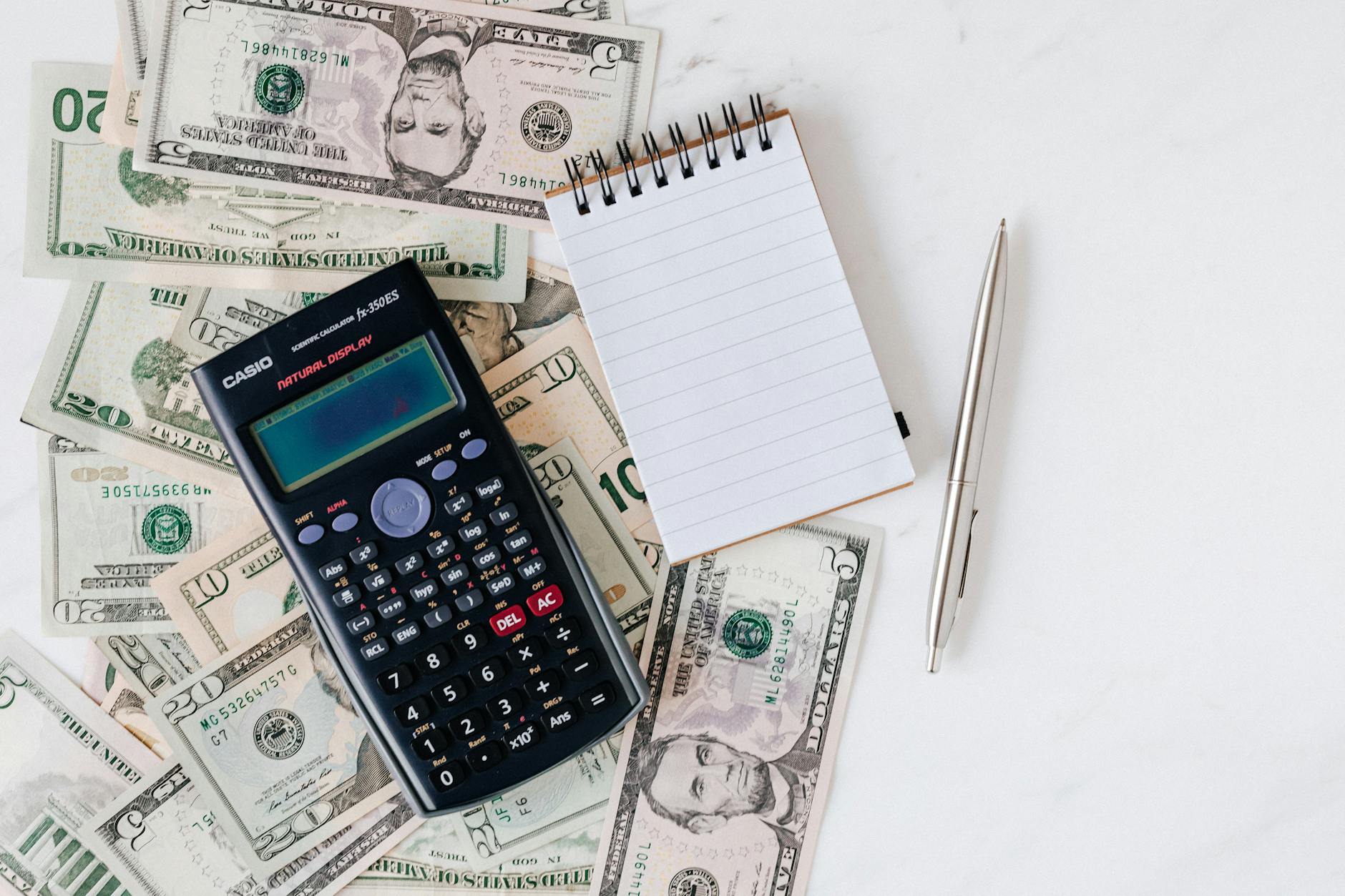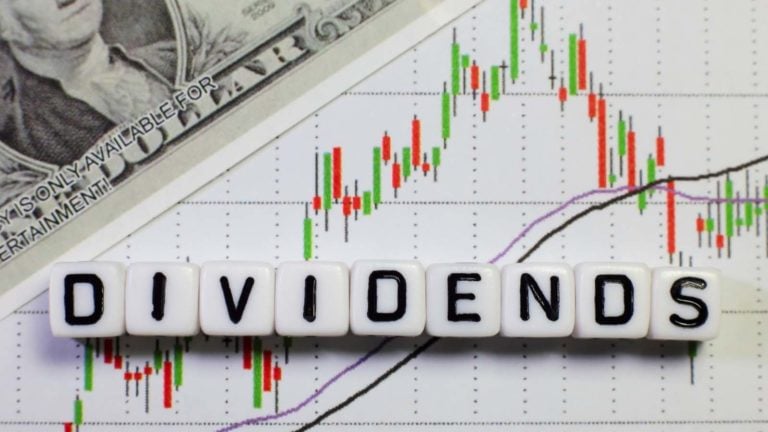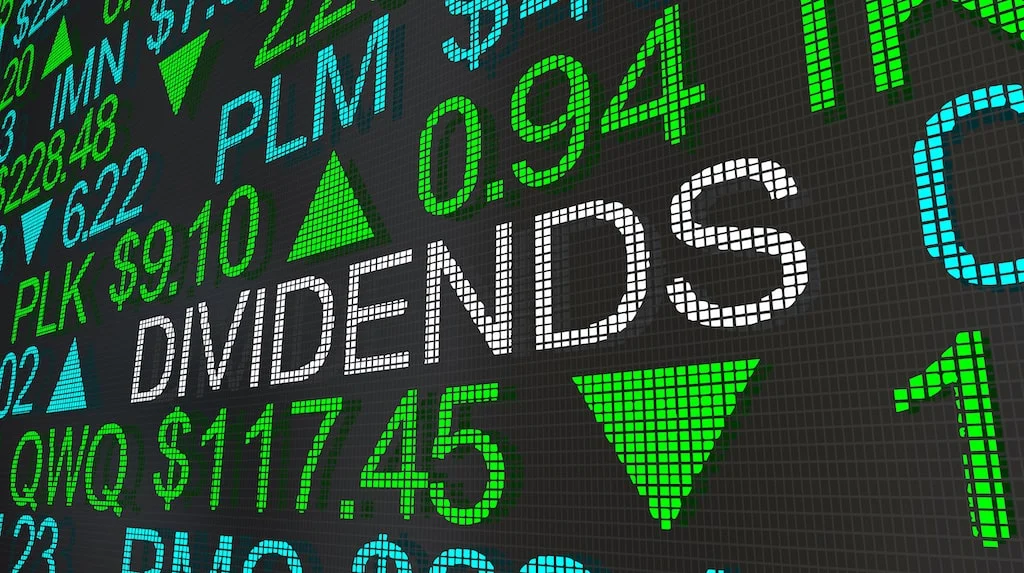A dividend is a payment from a public traded company to someone who owns it’s share in the stock market. It’s basically a way to incentivize the shareholders to continue investing in the company, even though dividends aren’t mandatory to be paid or it can be cut at any time.
What Is a Dividend?
A dividend is simply a payment a company makes to its shareholders from its profits. When you own shares of a company, you’re technically a part-owner. If the business is successful and generates earnings, it can choose to share a portion of those earnings with you through a dividend.
Dividends are most often paid in cash and deposited directly into your brokerage account. Some companies also pay dividends in the form of additional shares (called a stock dividend).
Here’s a simple example:
- Imagine you own 100 shares of a company that pays an annual dividend of $2 per share.
- Every year, you’d receive $200 in dividend income, usually split across quarterly payments.
It may not sound like much at first, but when you combine dividends with reinvestment and compounding over time, the results can be powerful.
Types of Dividends
Not all dividends look the same. As you start investing, you’ll see a few different types:
- Cash Dividends – The most common type. Paid in cash directly to your account.
- Stock Dividends – Instead of cash, you receive extra shares of the company.
- Special Dividends – One-time payments, often larger than usual, when a company has excess profits.
- Preferred Dividends – Payments made to preferred shareholders (a type of stock that has priority over common shares).
Most investors focus on cash dividends from common stocks, since these provide the steady income stream that makes dividend investing so attractive.
Key Dividend Terms to Understand
Before diving deeper, it helps to know a few important terms:
- Dividend Yield – Expressed as a percentage, it tells you how much annual income you’ll earn relative to the stock’s price. For example, if a stock trades at $100 and pays $4 in annual dividends, the yield is 4%.
- Payout Ratio – Shows what percentage of a company’s earnings are being paid out as dividends. A payout ratio that’s too high (near 100%) can be risky, since the company may not have enough left over to reinvest in growth.
- Ex-Dividend Date – The cutoff date for being eligible to receive the next dividend. If you buy the stock after this date, you won’t receive that particular payout.
- Dividend Growth Rate – The annual percentage increase in a company’s dividend. A consistent growth rate is a sign of financial health.
Understanding these terms helps you evaluate whether a dividend is sustainable and worth investing in.
Why Do Companies Pay Dividends?
You might wonder: why would a company give away money instead of keeping it for growth?
There are a few reasons:
- Rewarding Shareholders – Companies that pay dividends want to share their success with investors.
- Attracting Investors – Dividends make a stock appealing to income-focused investors, such as retirees.
- Signal of Strength – A steady or growing dividend often signals that a company is financially stable.
Of course, not all companies pay dividends. Young, fast-growing businesses (like many in tech) often reinvest every dollar back into expansion. But mature, stable companies — think Coca-Cola, Procter & Gamble, Johnson & Johnson — tend to reward shareholders through dividends year after year.
Why Dividends Matter for Investors
Dividends may seem like just a nice bonus, but over time, they can be one of the most powerful tools for building wealth.
1. Steady Income Stream
Dividends provide cash flow even when the stock market is volatile. For retirees, this can mean reliable income to cover expenses without selling investments.
2. Downside Protection
Dividend-paying stocks often hold up better during market downturns. Even if the stock price drops, you still collect income.
3. Power of Reinvestment
Reinvesting your dividends to buy more shares — known as a Dividend Reinvestment Plan (DRIP) — creates a compounding snowball effect. Over decades, reinvested dividends can account for a significant portion of total returns.
Example:
- Suppose you invest $10,000 in a stock with a 4% dividend yield.
- Without reinvestment, you’d collect $400 each year.
- With reinvestment and dividend growth, that $10,000 could grow into many times its original value after 20+ years.
This is why dividend investing is often called the “sleep-well-at-night” strategy: you earn while you wait.
Dividend Investing in Action
Let’s look at a real-world case. Coca-Cola has paid dividends for more than 60 years and has increased its payout every year for decades. If you had invested $10,000 in Coca-Cola in the 1990s and reinvested dividends, your position would be worth many times more today, even accounting for market ups and downs.
That’s the power of compounding in action: patient investors who reinvest dividends often outperform those who try to time the market.
Risks to Keep in Mind
While dividends are powerful, they’re not risk-free. A few things to watch out for:
- Dividend Cuts – Companies can reduce or eliminate dividends if earnings fall. This often leads to a sharp stock price drop.
- Chasing High Yields – A yield that looks “too good to be true” (like 12% or 15%) often signals trouble. Many companies with unsustainably high payouts end up cutting them.
- Sector Concentration – Some sectors, like utilities and REITs, pay high dividends. But relying too heavily on one sector can leave you vulnerable.
The best approach is to focus on companies with a long history of paying and growing dividends, supported by healthy balance sheets.
Getting Started with Dividends
If you’re ready to dip your toes into dividend investing, here are simple steps:
- Start Small – Buy a few shares of a well-known dividend payer.
- Use DRIPs – Automatically reinvest dividends to take advantage of compounding.
- Diversify – Spread investments across different industries and sectors.
- Be Patient – Dividend investing rewards long-term thinkers, not short-term traders.
You don’t need thousands of dollars to start. Even small amounts, consistently invested, can grow into meaningful income streams over time.
Conclusion
Dividends are more than just an extra perk of owning stocks — they’re a proven way to generate passive income, protect your portfolio, and build long-term wealth. Whether you’re a complete beginner or already investing, understanding dividends is one of the smartest financial moves you can make.
The earlier you start, the more time compounding has to work its magic. Begin small, stay consistent, and watch as your dividends grow into a reliable source of income that can bring you closer to financial freedom.





Leave a Reply